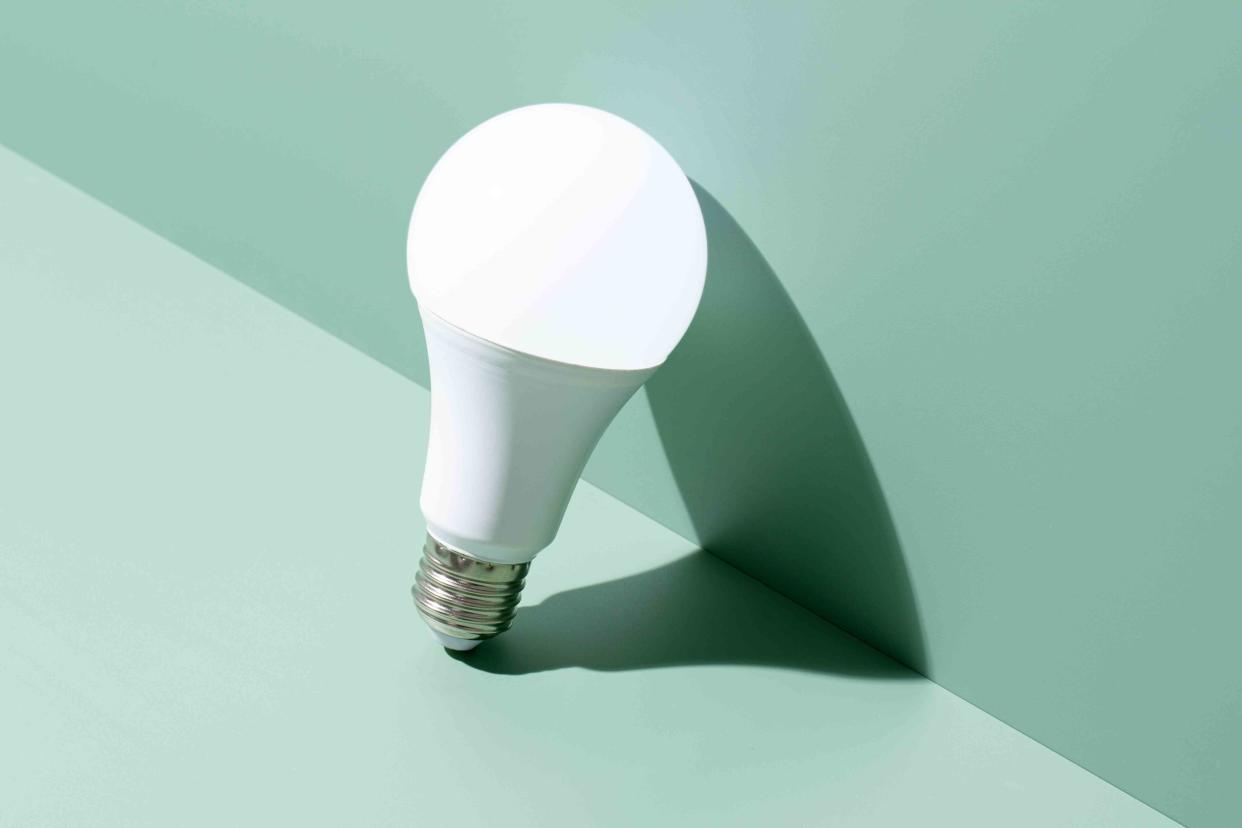What's the Difference Between Soft White vs. Daylight Bulbs?
They're on opposite ends of the color temperature scale.

MirageC/Getty Images
While determining the proper color temperature of your lighting may not sound like an exciting proposition, this small detail is more important than you might think, affecting your mood, productivity, and restfulness. But light bulb shopping can be confusing. What is the difference between soft white and daylight bulbs anyway? We're breaking it down below, so that you can pick the perfect bulbs for your needs.
Related: The 10 Best Light Bulbs of 2023
Understanding Light Bulb Color Temperature
The color temperature of light denotes how the light appears on a spectrum from warm (yellow-toned) to cool (blue-toned). It's measured in degrees of Kelvin (K) on a scale from 1,000 to 10,000. The lower the number, the warmer the color temperature, and the higher the number, the cooler the color temperature. For example, on the low end of the spectrum would be the very warm glow of a lit candle or a sunrise, while the higher end encompasses cloudy days and bright blue skies.
Light bulbs typically fall between 2,500K and 6,500K. However, when shopping for light bulbs, you might see a descriptive label for the color temperature (like soft white or daylight) instead of—or more prominently displayed than—the numbered rating, so it's important to know what those mean too.
It's also worth noting that the Kelvin rating is different from the watts (which measure how much energy a light consumes) and the lumens (which measures how bright a light is). Basically, light bulb boxes can be cluttered with lots of numbers and descriptions, but it's color temperature that will help you curate a specific mood and atmosphere.
Soft White vs. Daylight Bulbs
Soft white and daylight bulbs are two of the most common descriptors for light bulb color temperature and while they may sound similar, they're actually on opposite sides of the scale. Soft white is warm and, as the name implies, softer, while daylight is cool and bright. (Though you may have pictured "daylight" as warm and sunny, it's more accurate to picture a blue sky.) The other two most common light bulb color temperatures are warm white and cool white, which fall between soft white and daylight on the spectrum. Here's a breakdown of the typical Kelvin ratings associated with each of these light bulbs types:
Soft white: 2,700K-3,000K
Warm white: 3,000K-4,000K
Cool or bright white: 4,000K-5,000K
Daylight: 5,000K-6,500K
Which Light Bulb Color Temperature Should You Choose?
In general, warmer light bulbs are better for areas where you want to create a more comforting and relaxing environment, while cooler bulbs are better for spaces where you want to be more alert, awake, and energetic.
So, with that in mind, soft white light bulbs are great for bedrooms and cozy living rooms or reading nooks. Warm white bulbs are good for rooms like kitchens and bathrooms—where you need a little more light for practical purposes, but still want the spaces to feel inviting. Cool white bulbs should be used in more functional spaces—like home offices, garages, or sheds—where you may need more light to see the tasks at-hand. Daylight bulbs serve the same purpose, just amped up a bit more, so they're best for spaces where you need extra-bright and clear light for seeing details.
However, it's all up to personal preferences and lifestyle. For example, if you apply your makeup in the bathroom, you may opt for cooler light bulbs so you can see more clearly, but if you want your bathroom to feel like a cozy spa, warm light is probably the pick for you.
Related: 4 Types of Lighting and How to Use Them in Your Home
For more Real Simple news, make sure to sign up for our newsletter!
Read the original article on Real Simple.
